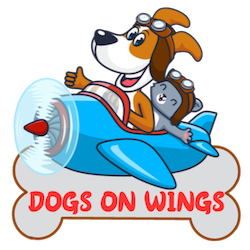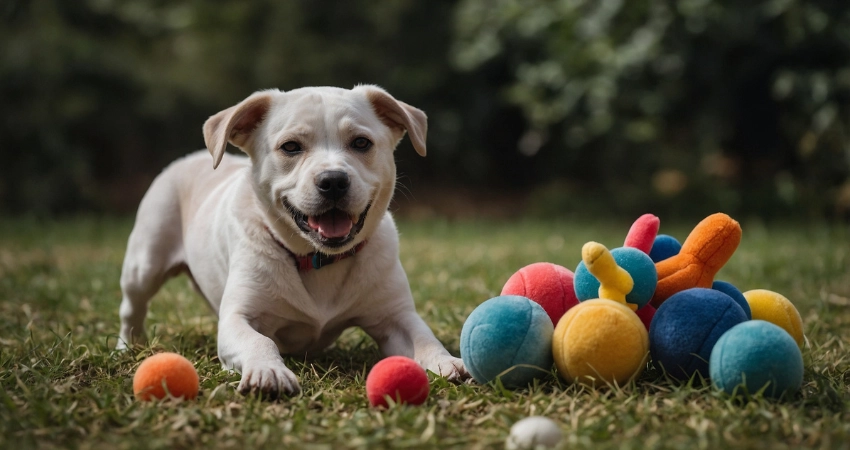Dog enrichment activities are essential for maintaining the physical and mental balance of our pets. Just like us, dogs need stimuli to help them explore their instincts and stay active and happy.
Offering these activities is not just a luxury but a way to provide quality of life. From simple games to interactive toys and outdoor experiences, the possibilities are vast and accessible.
Want to discover practical and fun ideas to include dog enrichment activities in your pet’s routine? Keep reading to learn how to make your dog’s life even more special and balanced!
What Are Dog Enrichment Activities?
The primary goal of dog enrichment activities is to stimulate your pet’s senses, mind, and body through challenges that encourage their natural instincts. These activities replicate experiences that would be crucial for survival in the wild, such as sniffing, digging, exploring unfamiliar environments, and solving small problems to earn rewards.
By offering enrichment opportunities, you help your dog avoid boredom and frustration, which often lead to destructive behaviors like chewing furniture or digging up the yard. More than mere distraction, these activities contribute to the overall well-being of your dog, providing cognitive, physical, and emotional stimulation.
Another important point is that enrichment is adaptable to any dog, regardless of age, breed, or size. From energetic puppies to elderly dogs with limited mobility, there are always ways to offer challenges and experiences that respect their limitations and preferences.
Why Are Dog Enrichment Activities So Important?
Dogs are curious and intelligent animals that need constant stimulation to remain healthy and happy. Without adequate attention, they can develop various behavioral and emotional problems.
Examples include excessive barking, separation anxiety, and even aggression—situations that could be avoided with a richer and more varied routine.
Enrichment is also essential for preventing physical illnesses. Activities involving movement help combat obesity and keep the cardiovascular system functioning well.
Meanwhile, mental stimulation, such as puzzles, reduces stress and promotes relaxation, contributing to the animal’s longevity and quality of life. Additionally, by implementing doggy skill-building activities, you strengthen the bond of trust and affection between owner and pet.
Dogs that receive personalized attention tend to be more obedient, confident, and emotionally balanced, which makes life at home and in public spaces much easier.
Types of Dog Enrichment Activities
Dog enrichment activities can be divided into categories that address different aspects of the animal’s needs. Below, we explore each of them in detail, with practical examples you can apply daily.
1. Food Enrichment
One of the simplest and most effective ways to enrich your dog’s routine is by turning mealtime into a fun activity. Instead of simply placing food in the bowl, use interactive toys, like stuffed Kongs or slow feeders that release food gradually as the dog manipulates them.
Another idea is to create “treasure hunts” by hiding treats around the house or yard. This type of activity stimulates the natural instinct to sniff and search for food, keeping your dog occupied for longer. You can also offer frozen foods or different textures, like pieces of fruits and vegetables, to add new levels of interest to meals.
2. Sensory Enrichment
Dogs primarily explore the world through their sense of smell but also enjoy experiencing different textures, sounds, and even tastes. To stimulate your dog’s senses, try offering new experiences, like synthetic grass mats to walk on, toys with varied textures, and even relaxing or stimulating sounds. These are simple but effective dog enrichment activities.
Walks in different locations are also excellent for sensory enrichment. Taking your dog to explore new environments provides access to a variety of smells and sights that will keep them engaged. Nature trails, beach visits, or even exploring different neighborhoods are great options to mix up the routine.
3. Social Enrichment
Dogs are social animals that benefit from frequent interactions with both humans and other animals. Organizing playdates with other dogs at parks, participating in training groups, or planning family outings are great ways to provide social interaction.
Additionally, dedicating time to play and train with your pet is essential. Activities like fetch, tug-of-war, or teaching new commands strengthen the bond and offer challenges your dog loves to overcome.
4. Physical Enrichment
Dogs need regular exercise to maintain a healthy body and release pent-up energy. This is especially important for high-energy breeds like Border Collies, Labradors, and German Shepherds. Activities like running, swimming, hiking, or fetch games are excellent forms of exercise and can double as dog enrichment activities.
For dogs living in apartments or with less space, creative indoor games, such as stair climbing or chasing toys, can be just as effective. Remember to respect your dog’s physical limits, adjusting activity intensity according to their age and health condition.
5. Cognitive Enrichment
Keeping your dog’s mind active is as important as physical care. Brain games, such as dog puzzles, are ideal for challenging your pet’s intelligence. These toys encourage the animal to think to achieve a reward, such as food or a hidden toy.
Another example is training new tricks. Teaching basic commands, like “sit” and “shake,” or more complex tricks, like “roll over” or “fetch objects,” keeps your dog mentally stimulated and strengthens the connection with their owner.
How to Include These Dog Enrichment Activities in Your Routine
Integrating dog enrichment activities into daily life might seem challenging at first, but with small adjustments, you can make your pet’s routine much more fun and healthy.
Start by adding one or two activities per week and observe how your dog reacts. Gradually, you can vary the types of enrichment, alternating between physical, cognitive, and sensory activities. Remember, the goal is to keep your dog engaged and happy, so pay attention to their preferences and adjust accordingly.
A practical tip is to set fixed times for these activities, whether before work or at the end of the day. This creates a predictable routine for your dog, helping reduce anxiety and maintain emotional balance.
Practical Tips to Enrich Your Pet’s Day
- Rotate Toys: Alternate the available toys to keep your dog interested, storing some for specific moments;
- Use Household Items: Cardboard boxes, empty bottles, and old socks can become improvised toys. Just ensure they’re safe for your pet;
- Include the Family: Involve all household members in playtime, creating opportunities for interaction and learning for your dog;
- Explore the Outdoors: Daily walks are essential, but varying locations increases stimulation and prevents monotony;
- Respect Limits: Watch for signs of fatigue or discomfort and adjust activity intensity as needed.
Enrichment and the Owner-Dog Relationship
Dog enrichment activities not only benefit the animal but also strengthen the relationship between owner and pet. Time dedicated to learning and fun creates positive memories and helps build mutual trust.
When you spend time with your dog, they notice your care and attention, resulting in a happier and more obedient pet. Additionally, observing how your dog interacts with different stimuli allows you to better understand their personality and preferences, making life together even more harmonious.
Final Considerations
Dog enrichment activities are indispensable tools for promoting health, happiness, and balance. Whether through interactive toys, varied walks, or new challenges, there are countless ways to stimulate your pet’s well-being.
Ready to transform your dog’s routine? Start today with one of these ideas and watch how they show gratitude with joy, energy, and lots of love!

